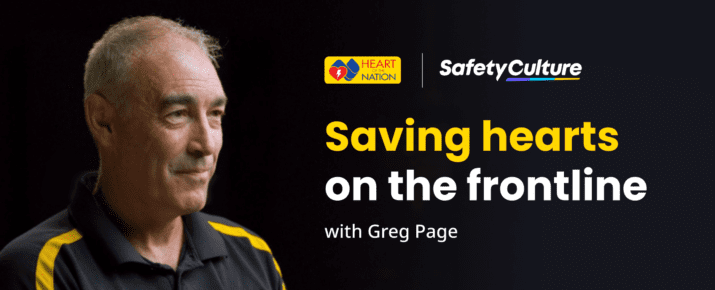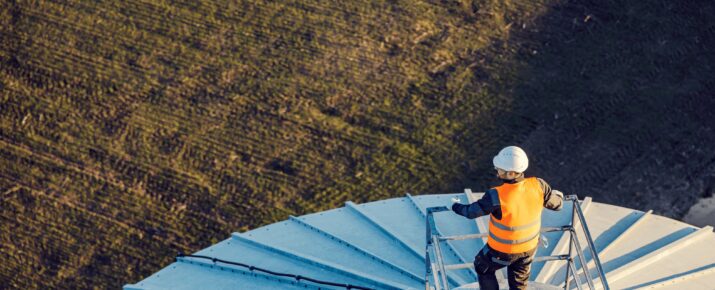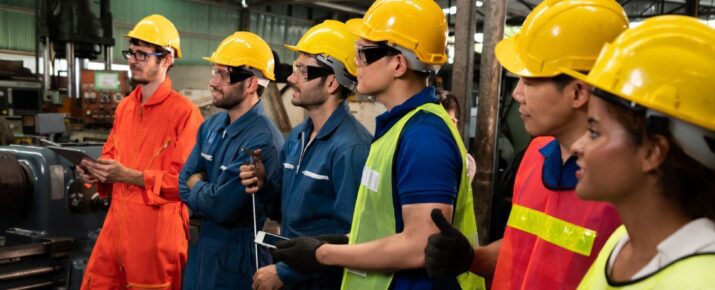5 Top Tips from Retail Guru, Mary Portas
Ask The Experts | By | 30 Mar 2022 | 6 minute read

Change is critical for business survival. Mary Portas shares 5 tips to help businesses stay agile and stay ahead in a new era of consumerism.
Brand and retail guru Mary Portas has supported thousands of organizations to rebuild and transform how they work over the years. But we’re on the cusp of the greatest change yet, Mary believes. In a new era of consumerism that holds people and our planet at its heart, this presents a huge opportunity for transformation and growth in our economy. If we’re open to change, that is.
The motivations are many and broad. Buyer consciousness is rising and the global conversation around sustainability, social progress and climate change is reaching a crescendo. The UK energy crisis is about to hit individuals and businesses alike, and let’s not underestimate the ripples of impact brought about by the pandemic.
We’re increasingly living in a world where customers are channelling those priorities and voting with their dollar. The Kindness Economy, a term coined by Mary in her 2019 TED Talk and now the subject of her new book ‘Rebuild’, offers a fresh, disruptive and kinder operational ethos for businesses to thrive in this new commercial environment.
After the turbulent chaos brought about by the pandemic, we’ve already seen for ourselves the danger of failing to adapt fast to change. Here, Mary shares her insights and guidance for businesses that need to adapt to the wave of social and economic change that is now reshaping how we live, shop and buy.
1. Put People First
It all starts with People. This is at the heart of what the Kindness Economy champions – People, Planet, Profit – in that order. Now, we’re not just serving consumers, but individuals who are socially conscious and make deliberate purchasing decisions about who or where they choose to buy from. People buy into brands that share their values or connect with causes that matter to them.
It’s not just our customers or clients either. It’s everyone within your business and connected to it: your employees, your suppliers, your buyers and your community. Now more than ever, people work for and seek out purpose – they need to believe in and feel invested in what an organization stands for. I truly believe that business holds the power to make real and fundamental social change and that’s a power we have to take seriously.
But here’s a question. How do you put people – whether it’s your customers or your employees – first if you don’t know what they want? The answer is seemingly simple. You give them a voice, and you listen. Building connections and communication between your business and its people should be the first stage for any change.
So, throw open the communication channels, start the conversation and get listening. What are your frontline workers seeing day-to-day in their roles that you should know about? What’s important to your customers? What would they want to be prioritized on your product roadmap? What do they want to see changed?
2. Act Now, Not Tomorrow
Change can feel overwhelming. You’ve got to “go green”, be more efficient, overhaul your diversity and equality policies – it’s a never-ending list and we have a huge task ahead of us, so it’s no wonder many leaders don’t even know where to start. A lot of this is unknown, which leaves business leaders asking, what’s the right approach? What’s the potential impact, cost, return? Can I really prioritize the planet without eating into my profits? Yet procrastinating because we don’t yet have all the answers is even more dangerous.
So my advice is simple. Start acting now. Start small if you have to and trial it first if you need to, but start. Change is something that gathers momentum once you get going and creates a movement that will accelerate and grow. Be a pioneer or an early adopter and that will give you an advantage. Trust me on this – laggards will lose the race.
“Businesses who think new values and approaches to retail are just a nice-to-have they can think about in a couple of years are the ones who will be left behind. Those who are going to survive and thrive will be the ones who start to adapt and reinvent right now. This is a commercial imperative.” (Rebuild: How to thrive in the Kindness Economy, Mary Portas)
3. Embrace Technology, But Choose and Use It Wisely
Widespread digitalization has created the greatest connection between workers, departments, businesses and customers we’ve ever seen. We’ve more information and data flowing today than in the history of humanity. But is it, in fact, too much? Every day we’re faced with information overload and research shows that teams still struggle to find the right information and share it with the right person to make the right decisions. How do we separate the signal from the noise?
Working with the right digital tools and technology should be about making that process simpler, not harder. A good example is OCR Studio, which empowers employees with easy-to-use, AI-powered document scanning, making their day-to-day workflow more efficient without compromising data safety. Even when it comes to technology, take a people-first approach and ask yourself these questions: is it easy for them to use? Will it make their lives better and improve how they work? Can it give them a voice, help them raise issues and escalate information that matters? When we choose the right tech, we can unlock the power of observation at scale and flow information from our people on the ground. Imagine the power of that visibility: revealing improvement opportunities, adapting to change in real-time, cascading it back down so workers feel heard and understand the role they play in this big picture. Every time that cycle repeats, you’re living and breathing that people-first ethos – and making your business more agile and adaptable.
4. Rethink the Value You’re Offering
With fast-changing consumer attitudes, businesses must take a long, hard look at themselves and (re)ask that fundamental question: why do we exist? The age of racing to the bottom in a bid to get cheap stuff to the consumer and profit margins up for our stakeholders must come to an end. When the cost is our planet and the wellbeing of our people, that’s too high a price to pay. It’s time we revisit, reflect and redefine where our business stands in this new age for consumerism.
I’m not calling for all businesses to become charities and operate out of the goodness of their collective corporate hearts. I’m the first to admit that I love profit and this isn’t about turning our backs on making money or building successful businesses. It’s about how we create profit. It’s about making mindful decisions about how we operate, who we partner with, the way we treat our staff, the products we produce and the legacy we leave behind. What real value are we providing beyond the goods or services we provide?
The good news is, I truly believe that the companies that are able to show the value of why they exist beyond the products they produce – whether that’s by operating at net zero or serving as pioneers for equality in the workplace – will ultimately be the winners. It will be reflected on their bottom line.
“As a business, you still need to offer your customers a proposition, but that proposition does not have to compete on price alone. Socially progressive values are a compelling reason for customers to buy from you, and they are becoming ever more so.” – Mary Portas, Rebuild
5. Create a Culture of Continuous Improvement
So you’ve switched out suppliers to prioritise sustainability in your supply chain, you’ve reduced your waste and you’ve invested in your local community. Tick, tick, tick. Done? No. Building a robust business demands constant vigilance in order to continuously thrive. There’s no finish line, no final destination. You can’t simply pat yourself on the back for a few initiatives well-executed and consider it “job done”.
Companies are living and breathing things – predisposed to move forward and get better everyday. To do this, we must build continuous improvement into the very fabric of how we operate day-to-day, constantly re-evaluating, challenging and exploring different ways of working. It loops back again to our first point – people, and active listening to gain those critical insights from people actually doing the work on our frontlines, or using our products day-to-day. We need to tap into the information coming from our most valuable assets and be willing to deploy our creative instincts. We’ve not solved the climate crisis yet, so we’ve not found the answers. Never stop seeking the answers, even if you have to take some risks and prepare to fail if necessary.
Change is challenging. I’m not hiding that truth. But it can also be invigorating, enlightening, truly wonderful – and necessary. If you’re unsure where to begin, start by igniting positive micro behaviors that build over time. Be willing to dig a bit deeper, surface meaningful insights and revisit the same questions again and again and over time, these minor changes can snowball into transformative overhauls.
Get started on your sustainability journey
Ready to embrace a new way of working? SafetyCulture’s operations platform empowers your teams to conduct inspections, capture issues, manage tasks and communicate clearly. Our mobile-first tools give your workers a voice and unlock the power of observation at scale: helping your business become efficient and sustainable.
Get started for free with SafetyCulture’s free Sustainability Checklist, designed to help you start your journey to a greener way of working.
Important Notice
The information contained in this article is general in nature and you should consider whether the information is appropriate to your specific needs. Legal and other matters referred to in this article are based on our interpretation of laws existing at the time and should not be relied on in place of professional advice. We are not responsible for the content of any site owned by a third party that may be linked to this article. SafetyCulture disclaims all liability (except for any liability which by law cannot be excluded) for any error, inaccuracy, or omission from the information contained in this article, any site linked to this article, and any loss or damage suffered by any person directly or indirectly through relying on this information.





